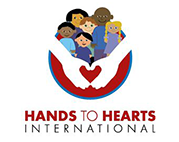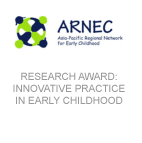It seems that almost every week I receive an email or a call from someone interested in supporting an existent orphanage or who wants to establish new orphanages. While their desire to help needy children is heart-warming, I cringe at the thought of another orphanage. I tell people that orphanages are much like prisons, they are a “build them and they will come” scenario.
I ask people to pause for a moment and ask, where are all those “orphans” living now? The answer is typically that they are living with their family – yes, they do have families. Most children categorized as “orphaned” have one living parent, sometimes both parents are living. And even in cases where both parents are deceased, there are aunts, uncles, and grandparents. Here is a graph created by the Better Care Network Secretariat, which demonstrates the staggering percentage of children who reside in orphanages, while they have at least one living parent.
|
Country |
Estimated percentage of children in orphanages with at least one parent alive |
|
Afghanistan |
85-90% |
|
Belarus |
87% |
|
Bolivia |
59% |
|
Kyrgyzstan |
80% |
|
Sri Lanka |
80% |
|
Tajikistan |
80% |
|
Zimbabwe |
39% |
The driving force behind most children moving into orphanages is poverty. When as a parent you are barely surviving the day-to-day crush of profound poverty, and you can barely feed the children you already have, you may view the orphanage as a good option. Consider that the children there typically get regular meals, basic medical care and clothing and schooling – even more benefits if this orphanage is supported by Western funding. This can outwardly look like a great alternative to what little the parent can offer. But does a baby or child live on food, medicine, books and toys alone? Can an institution provide what a parent can? The answer to both questions is a vehement “No”.
I have visited many orphanages and I have heard reports from many more. The reality is that they do exist and the reasons they do are complex and often involve multi-faceted — family poverty, disease, a serious medical condition or disability, gender preferences, the stigma of unwed motherhood, etc… — but an institution cannot provide what a family can. Orphanages are simplistic solutions that let parents, family, community, society and government all off the hook. If an orphanage building exists it will be filled with children, but dropping children off at these institutes is much easier than trying to reverse the tide 3, or 5, or 17 years later when it is time to reintegrate these children into the community.
Westerners want to help, but most do not understand the extremely complex dynamics that are at play, and building orphanages for “orphans” is about the most destructive possible action one can take. When a child is removed from his or her family and community and placed in an institution, it is often a one-way ticket, and they rarely leave. Institutionalization typically causes radical developmental delays, impairing physical, cognitive, language and social/emotional development. How can a child learn to love and be loved in an institution? And, when children do not build this basic human capacity, the lifetime consequences for the child and community can be devastating. This is exactly the concern that led HHI to begin our work in orphanages.
While HHI continues to support orphanages with care-giver training and consultations, we now work more within communities, with pre-school teachers, day care workers and directly with parents. We have found that these people are working every day to care for their children, or the children of their community, and every day they are faced with poverty, lack of food and resources, gender discrimination, etc., BUT they are eager to provide for their children and they are excited and honored to have an HHI Trainer teach them how they can best support their children’s health and development.
Since our launch in 2006, HHI has worked with just over 3,000 women, and they are in turn improving the well-being of almost 23,000 children! And, this has been done with less than $400,000, which is pretty amazing, considering the typical results are: children are healthier, gaining more weight, learning language earlier, have improved sleep and digestion and are easier to soothe; and women are more confident, take greater pride in their work, provide improved nutrition, practice better hygiene and sanitation, are more responsive to their children, and more at ease in their care-giving.
Sadly, a recent CNN article recently trumpeted the building of a new orphanage in Uganda. The article outlines that the cost of the construction was roughly $800,000. It will accommodate 180 orphans at capacity. At the opening of this institution, “Local dignitaries and the orphans’ relatives, who couldn’t afford to care for them, attended…. It was a rousing celebration of song and dance, ceremonial ribbon-cuttings and speeches…” REALLY? Exactly what was to be celebrated?
What if this concerted effort (which raised $800,000) was focused on helping the families of their children who “couldn’t afford to care for them”? What if they were given support with some extra food, school fees and health care? I doubt that would have cost almost a million dollars, and would be considerably less expensive than the monthly operating costs will be to care for all of these children in the orphanage.
FACT: In Eritrea, the average economic cost for one child in residential care averaged about $1,900; in Benin about $1,300. The corresponding cost of a child’s integration into a family in Eritrea was about $100. (World Bank, July 2004)
I think it’s time that we think more deeply, become more informed, and meet people where they are. Orphanages are not the solution, at best they can offer a temporary safety net. There are much better ways to help. Find ways to invest in options that keep children where they belong, in the community. This is healthier for the children, the families, communities and future global society.









